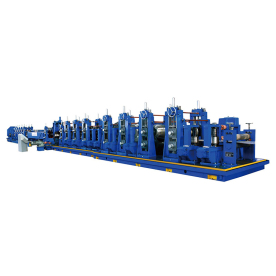[Impedor Circuit Element]Understanding the Impedor Circuit Element: Applications and Implications in Modern Electronic Design
News 2024-11-22
****
Understanding the Impedor Circuit Element: Applications and Implications in Modern Electronic Design
What is an Impedor Circuit Element?

Understanding the Impedor Circuit Element: Applications and Implications in Modern Electronic Design
The impedor can take various forms, including resistors, capacitors, and inductors, each serving distinct functions based on their unique impedance characteristics. This makes the impedor a versatile component in designing circuits for different applications, whether for audio equipment, telecommunications, or power distribution.
Importance of Impedance in Circuit Design
Understanding the concept of impedance is foundational to grasping the function of the impedor circuit element. Impedance differs from simple resistance because it takes into account not only the opposition to DC (direct current) but also to AC (alternating current) signals. This becomes particularly significant in applications where signals fluctuate rapidly, as in RF (radio frequency) systems or high-speed digital circuits.
In these contexts, the phase relationship between voltage and current becomes crucial. An impedor circuit element can be manipulated to create specific phase shifts, optimize signal integrity, and ensure efficient power transfer. This capability is pivotal in minimizing signal loss and distortion, which may degrade performance in sensitive electronic applications.
Applications of the Impedor Circuit Element
The versatility of the impedor circuit element allows it to be employed in a multitude of applications, each with its unique requirements:
1. **Audio Electronics**: In audio equipment, the impedor circuit element shapes the frequency response of sound signals, allowing for greater clarity and fidelity. For instance, equalizers use various impedor configurations to boost or cut certain frequency bands, refining the output sound.
2. **Telecommunications**: In telecom systems, matching impedance is crucial for minimizing signal reflections at interconnects. This ensures that the power transmitted through the medium is absorbed effectively, which is essential for maintaining signal strength over long distances.
3. **Power Management**: In power circuits, impedor elements are critical for regulating voltage levels and facilitating safe energy distribution. Components like inductors and capacitors are integral in filtering and smoothing out power supply signals, thereby preventing voltage spikes and surges.
4. **RF and Microwave Circuits**: In RF applications, the design of antennas hinges on impedance matching to maximize power transfer between the transmission line and the antenna. The performance of such systems can be drastically improved through the careful selection of impedor components.
The Future of Impedor Circuit Elements in Development
As technology evolves, the significance of impedor circuit elements continues to grow. With the rise of IoT (Internet of Things) devices, the demand for efficient and compact electronic circuits has never been higher. Designers are now challenged to integrate impedor components that can handle diverse applications without compromising performance.
Additionally, advancements in materials science are paving the way for more sophisticated impedor elements. Novel materials, such as graphene and various nanostructures, promise to enhance impedance characteristics, leading to more compact and efficient designs.

Understanding the Impedor Circuit Element: Applications and Implications in Modern Electronic Design
In summary, the impedor circuit element is an integral part of modern electronics, influencing the design and functionality of a wide array of devices. From audio systems to telecommunications, its role in regulating impedance cannot be overstated. As technology continues to advance, the evolution of impedor elements will likely play a crucial role in shaping the future of electronics, ensuring that devices operate efficiently and effectively in an increasingly interconnected world. Understanding these components is essential for anyone looking to delve deeper into electronic design and engineering.
